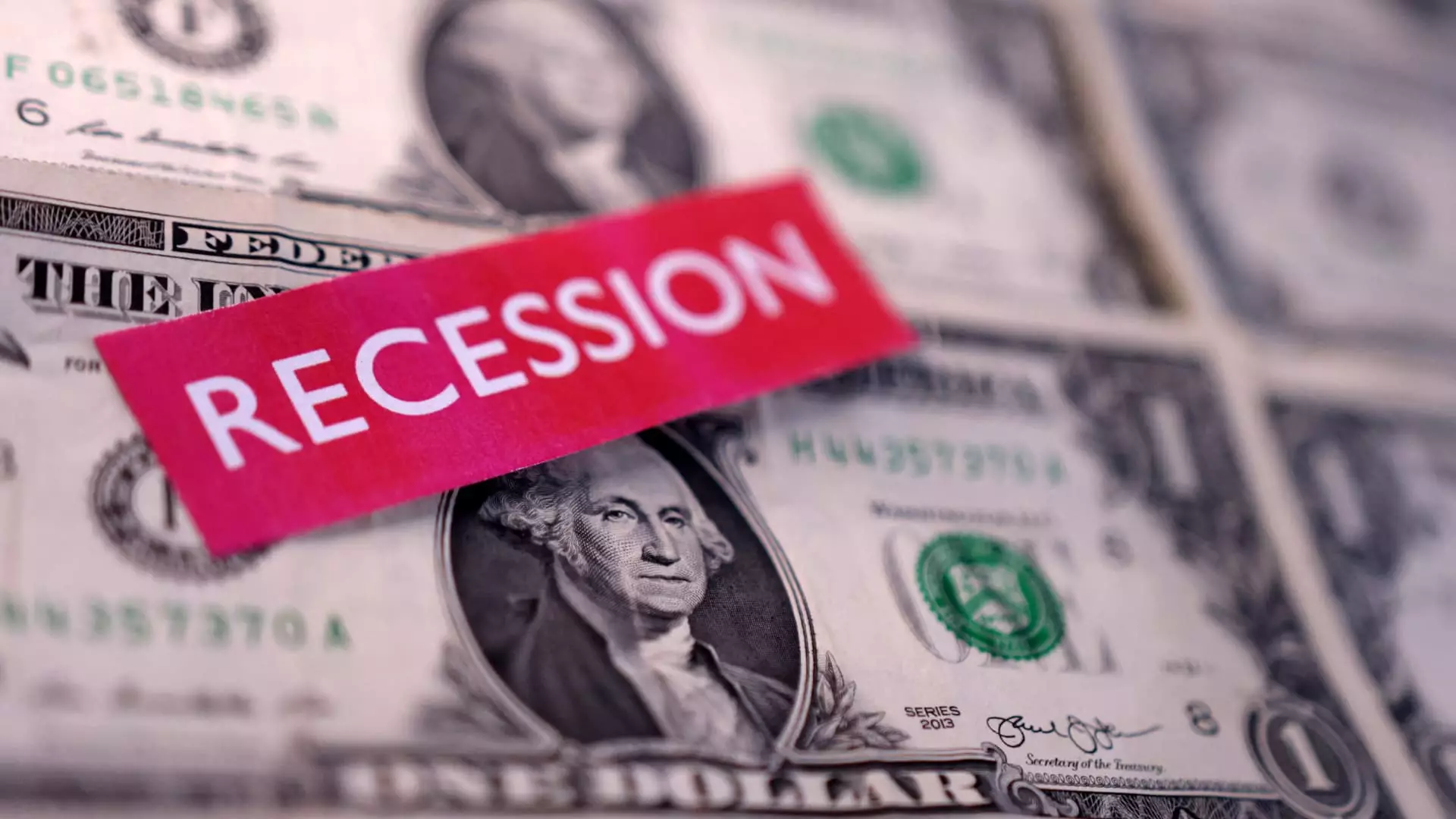As we drift further into 2023, the United States finds itself perched precariously on the edge of a potential economic downturn. With recent surveys revealing that economists and financial experts are putting the odds of a recession at nearly 50%, it’s time to delve deeper into the unsettling reality behind these statistics. The implications of a slowing economy—or stagflation, as some increasingly fear—reverberate beyond classroom theories and into the daily lives of American citizens. Questions loom large about whether we are witnessing an inevitable decline or navigating through a mere hiccup in the economic cycle.
The Underpinnings of Economic Anxiety
A recent Deutsche Bank survey indicates that 43% of financial professionals predict a downturn within the next year, stirring concerns that paint a grim picture of the immediate economic future. Despite unemployment being relatively low and many indicators suggesting moderate growth, this pervasive anxiety among both consumers and business leaders cannot be overlooked. The Federal Reserve, under the leadership of Jerome Powell, continues to maintain that the economy is fundamentally strong, yet they revised GDP growth forecasts downward to a mere 1.7% for the year. At this juncture, it’s critical to question whether this tempered optimism holds any weight against the backdrop of rising inflation rates, which could usher in an era reminiscent of the troublesome stagflation of the early 1980s.
The Inflation Dilemma: A Double-Edged Sword
Inflation, a largely dreaded term for any economy, still looms large in discussions regarding U.S. fiscal policy. With the Fed’s outlook for core inflation rising to 2.8%, apprehensions about sustaining growth while simultaneously controlling rampant prices are beginning to surface. While the phrase “stagflation” is being whispered in economic circles, the peculiar reality is that few believe a catastrophe akin to the previous stagflation episode—and its consequential economic hardships—is on the horizon. But could these inflated fears simply mask an underlying vulnerability within the economy?
Market analysts, including notable figures like Jeffrey Gundlach from DoubleLine Capital, echo the sentiments of caution prevalent in the investment community, placing the odds of recession at a stark 50% to 60%. The volatility in the equity market has sparked this uncertainty, with trade tariffs weighing heavily on investor sentiment and economic stability. The question we face, then, is whether these fears are reflected in the reality of the economy, or if they are products of speculative pessimism.
Political Turbulence: A Crucial Factor
The impact of political policies, particularly relating to tariffs, cannot be dismissed easily. Economists from institutions such as UCLA Anderson have issued stark warnings, indicating that the current administration’s policies could be leading the nation towards an economically uncertain future. These measures not only fuel inflation but incite hesitancy among consumers and investors, ultimately jeopardizing the growth trajectory. Economists like Clement Bohr outlined that such a downturn could be entirely avoidable, provided there is a shift in tariff strategy. The broader implications of these political decisions must weigh on our collective consciousness as we navigate turbulent economic waters.
Consumer Sentiment: The Heart of the Matter
Ultimately, perhaps the most telling indicators of an upcoming recession lie within consumer sentiment. Perceptions and confidence play pivotal roles in driving market dynamics. Even if growth metrics appear somewhat stable, the mere whisper of economic uncertainty initiates a domino effect that can precipitate serious downturns. As financial experts gauge consumer moods and expectations, it becomes increasingly evident that Americans harbor undeniably rational fears about their financial futures—concerns that policymakers must take to heart.
In an economic climate already fraught with uncertainties, navigating this murky terrain will require not just economic acumen but also political will. As recession probabilities inch closer to reality, a coherent strategy recognizing both economic and political dimensions becomes essential for fostering a more stable future.

